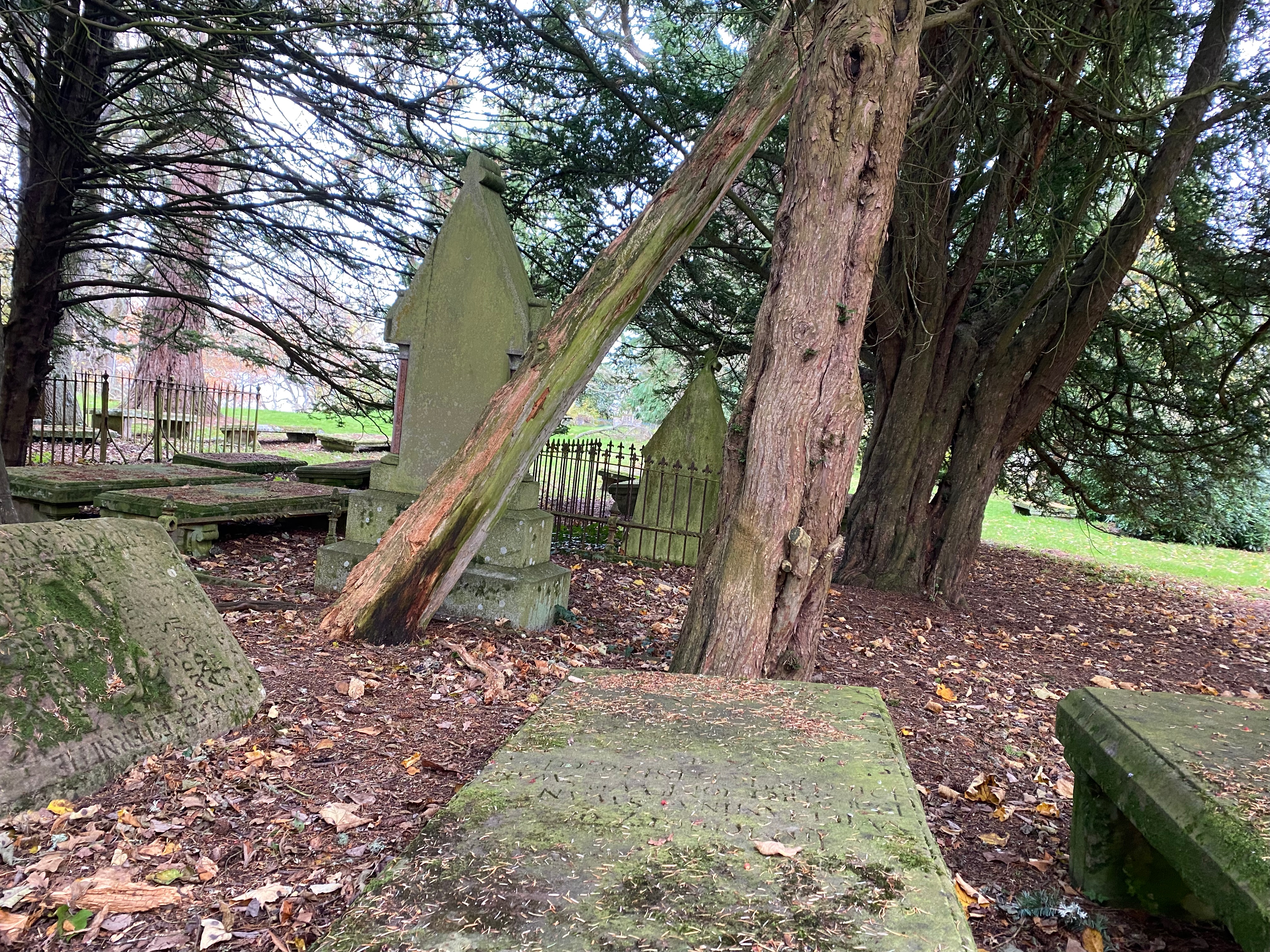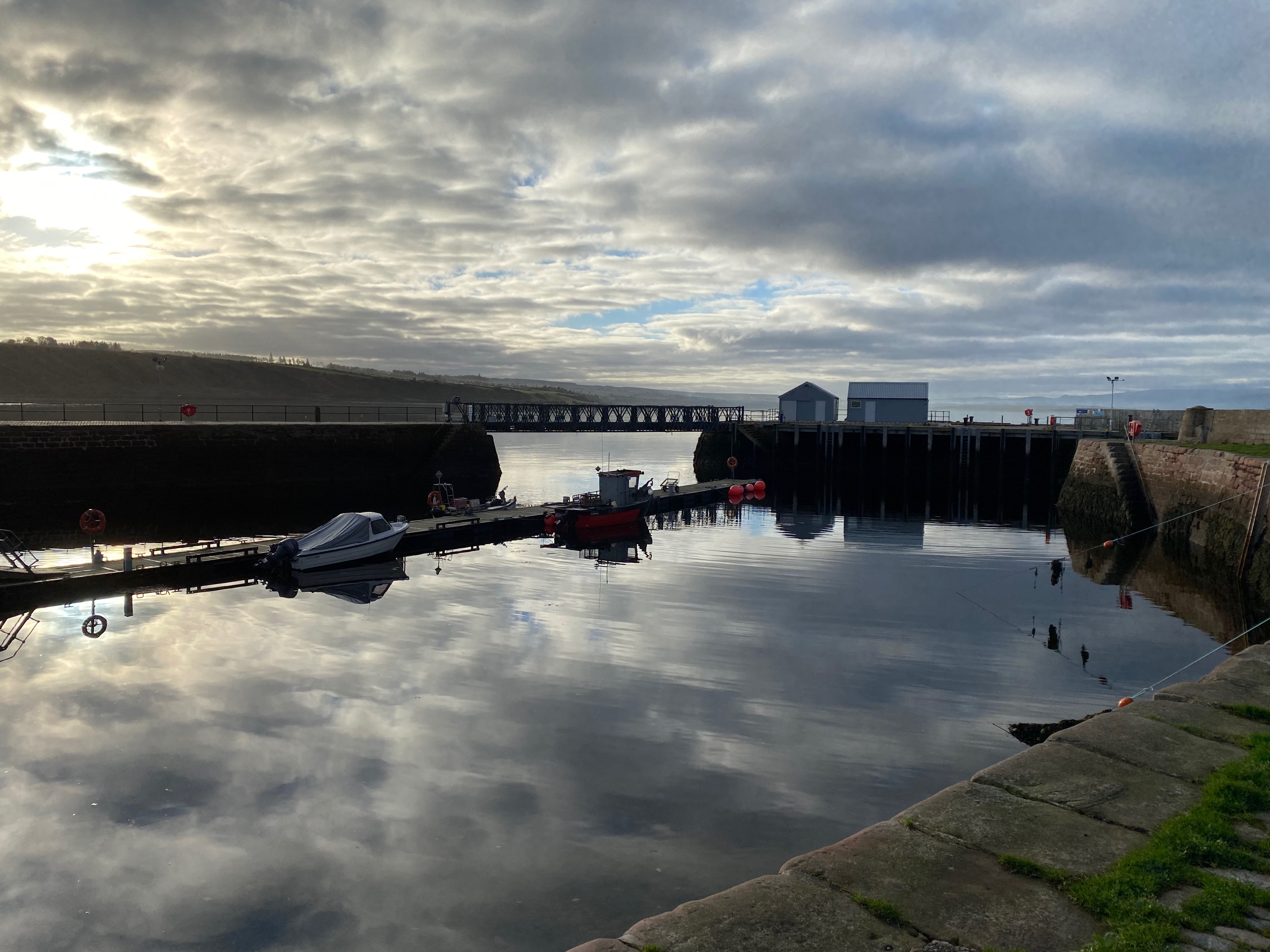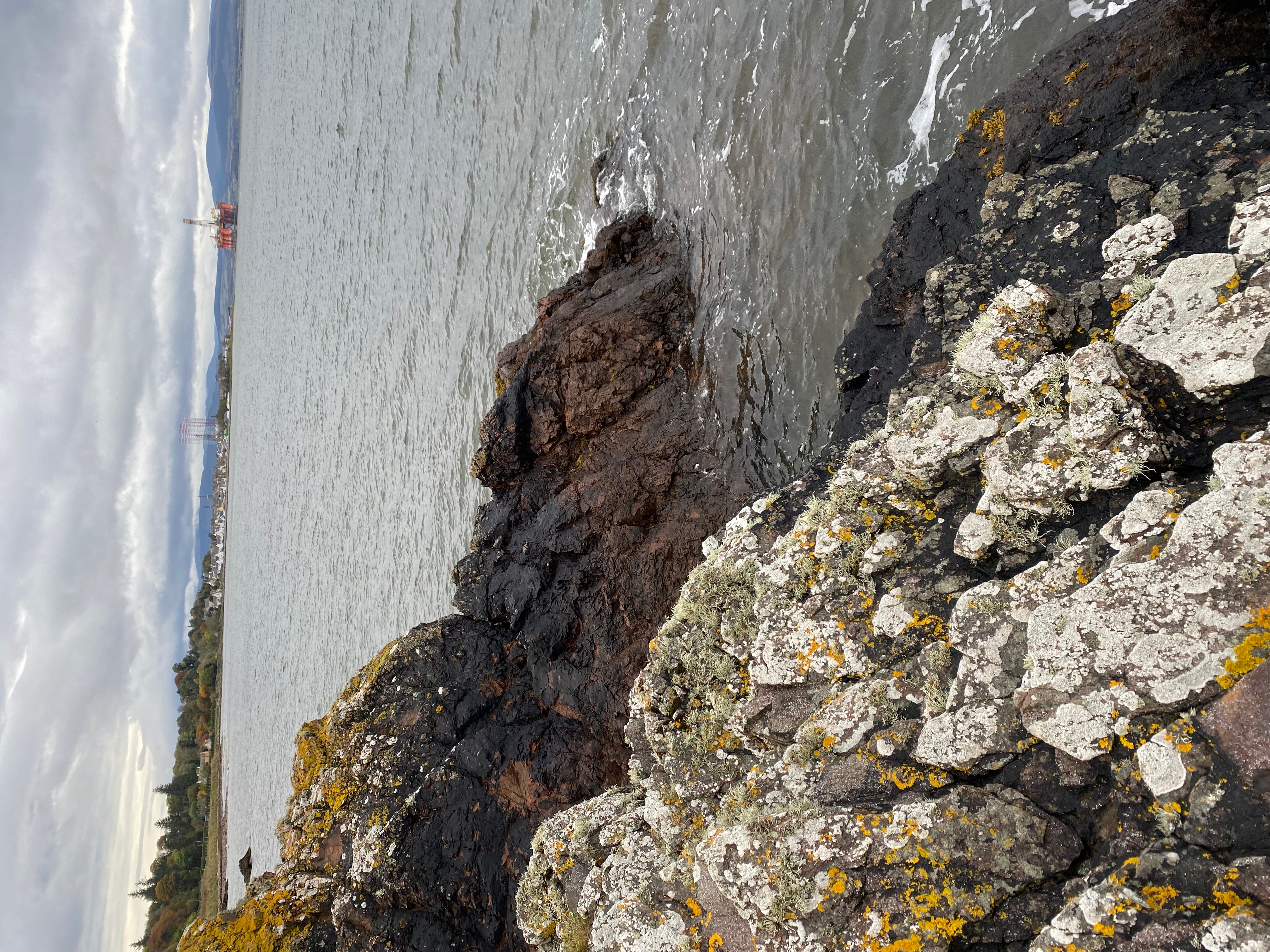Lawn Crypt
-
Rylan Gleave
Intro
“…perched like an eyry on a steep, solitary ridge, overlooking the Moray Firth…” Hugh Miller, Scenes and Legends of the North of Scotland, 1935
The landscapes, conversations, and reading that were so prevalent for me in Cromarty took root in artistic decisions. Rory and I were welcomed warmly, fed, and drunk with, and chatted long into the night on too many occasions to count. I think being met with such openness and willingness to share allowed us to relax in our writing, and for me, to allow music quite different to what I usually write to spill out.

Lawn Crypt, as a title, came about after spending hours in the crypt in St. Regulus’ graveyard. Sometimes known as The Pirate’s Graveyard, due to all the skull and crossbones engravings on graves, ‘memento mori’ became a phrase I’d read often. There was a calmness to all of the churches and graveyards, but especially the crypt. I dragged Rory with me on a few dark nights to record, closing my eyes in the pitch blackness, to see if the fear would be audible in my voice. The crypt was under a grassy raised bump, with no trace of the private chapel that used to stand there, and a grate in the ground for light. The odd balance of peaceful and terrifying underpinned much of the work that I made, and tied in with exploring the writings of Hugh Miller.
In our first week, Rory kept talking about Hugh Miller, and eventually I felt I needed to be up to speed with the geologist/writer’s accounts, just to have something interesting to say back. I’d been spending my time playing the harmonium in the freezing East Church, and started reading spooky excerpts of Scenes and Legends whilst trying to warm up in my breaks. Stories about violent storms, spectres, and blue-peaked hills seeped into the recordings that I took there, the resonance of the building creating ghostly wailing behind the out-of-tune reeds.

Woo’d
On a different occasion, I was playing the harmonium in the East Church, and two people came to visit the historic site, Virginia and her dad John. They asked if they could sit and listen to me sing, and eventually we got chatting about music, theatre, stories, and connections to the area. Virginia, who turned out to be Artistic Director of Licketyspit, asked if she could teach me a song. We’d talked about the importance of play when engaging children with art, and she mentioned this was a round that she’d learned. I was having trouble grasping it, conscious of my pronunciation and how cold it was, and she suggested I record her singing it. This recording ended up underpinning this piece, as a round and sampled. A huge thanks to you, Virginia, for staying in touch and letting me use the recording; I really enjoyed singing with you.
‘Woo’d an married, an a’
Kissed, an carried awa
And is no the bride weel aff
The bride that’s woo’d an married?’
Cradlesong
I wrote Cradlesong as I read about the Faeries’ Trough legend, playing the clarsach that was lent to me by the Arts Trust. There was no tuning key, and this mournful intonation stuck with me as I explored patterns and shapes. Taking several words and phrases from Miller’s passage, I added to them from a narrator’s perspective. I recorded my voice over these cut-up harp sounds, with some extra voice and slowed-down harp tracks. The eventual piece ended up sounding more like it was coming from a supernatural perspective, likely due to the vocal intonation and unsettling tuning.
‘Overlooking the Moray Firth
St. Benet’s chapel, in the ruins…
Along with his accompanying holy well
Near the chapel itself
There was a stone trough
For virtues derived also by the Saint
Like those of the well
If a baby had been replaced
Carried away…
One only had to lay the changeling
In the trough
And Oberon himself would
By some invisible process
Restore the child
Overlooking the Moray Firth…’

I know who killed me
The story of the murdered miller, appearing in pale light to a postman and his friend, and telling them the name of his killer, stuck with me on many long walks at night. I felt safe to walk in the dark at Cromarty, not like in the city, and this (combined with time spent in the crypt) quickly turned to feelings of creeping dread, at shadows and strange noises. Humanising the ghost was a way to reassure myself, and I ended up chuckling when the dark shapes revealed themselves to be branches or stones. If one must wander post-death, surrounded by deep forests and dramatic coastal scenery is a pretty good option?
‘As dawn broke o’er the day,
I made my way to Navity Wood,
Two gentlemen, aghast the sight of me,
A spectre where I thought I stood.
No single wave dashed over the black rock,
No gulls with hungry blood cries;
My bones scattered, like seaware on the shore
Ere the fall of the tide, in the morning.
I knew them both by name,
And called out in a voice full-clear,
“Good sirs, I know who killed me,”
My breath lost, sightless, to the air.
No single wave dashed over the black rock,
No gulls with hungry blood cries;
My bones scattered, like seaware on the shore
Ere the fall of the tide, in the morning.
“Good sirs, I know who killed me,”
A spectre whispered to the air.’

Black gold / dust
It’s impossible to miss the oil rigs in the Cromarty Firth, looming out of the ocean, a stark contrast against the natural landscape. I was thinking on permanence, and how many of those rigs are actually used whilst sitting by the docks. The creaking of feet on the harbour and cries of seagulls were almost as prominent as the rigs, and the wind nearly knocked me into the water a few times. Black gold / dust is a piano improvisation over some natural/artificial sounds, with experimental ingressive vocals to recreate the gulls.
What used to stand here
The harmonium again takes precedence in this final track, with a little more decorative clarsach. Improvising words again inspired by Hugh Miller’s writing, after an evening in The Cromarty Arms talking with folk about music, dogs, and Christmas trees, I scribbled words on new paper.
This track is a sort-of love song to the places and people of Cromarty, thinking again on what is lost to time, and how much solace I found in the abandoned spaces, and those full of life.
‘The evening is cloudless and bright
Covered in bushes of hazel and birch
Roughed by thickets of juniper
Red tumblings of streams
I wonder where this fragment of the old world
Could have lain for the last century
Rallied on his love adventures
And poetry
I will meet you there, old friend
My heart an affectionate one
To lay down the daisies at your side
To lay down the daisies’
Thanks; I have many thanks for many people, and listing all of them would fill more than a page — so my gratitude to all of you who we met in November, you made it unforgettable.

Contents